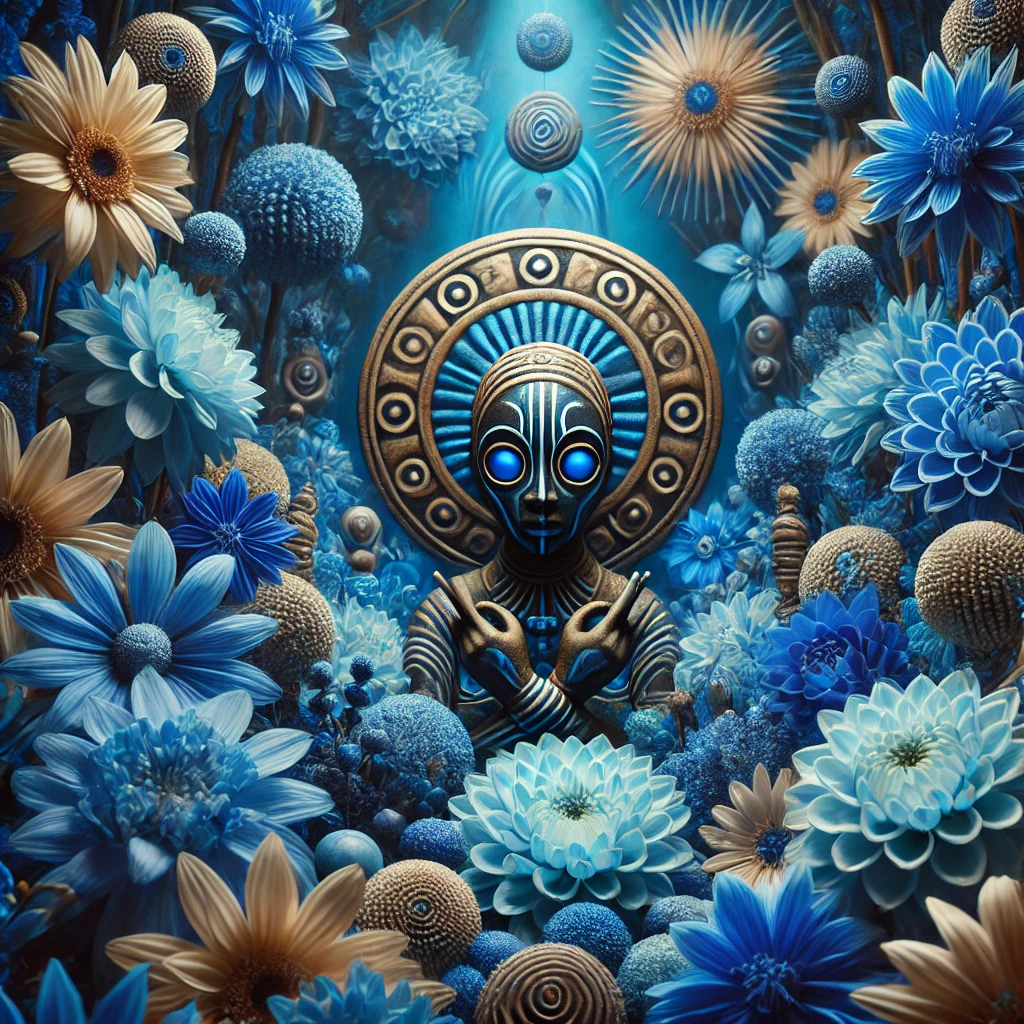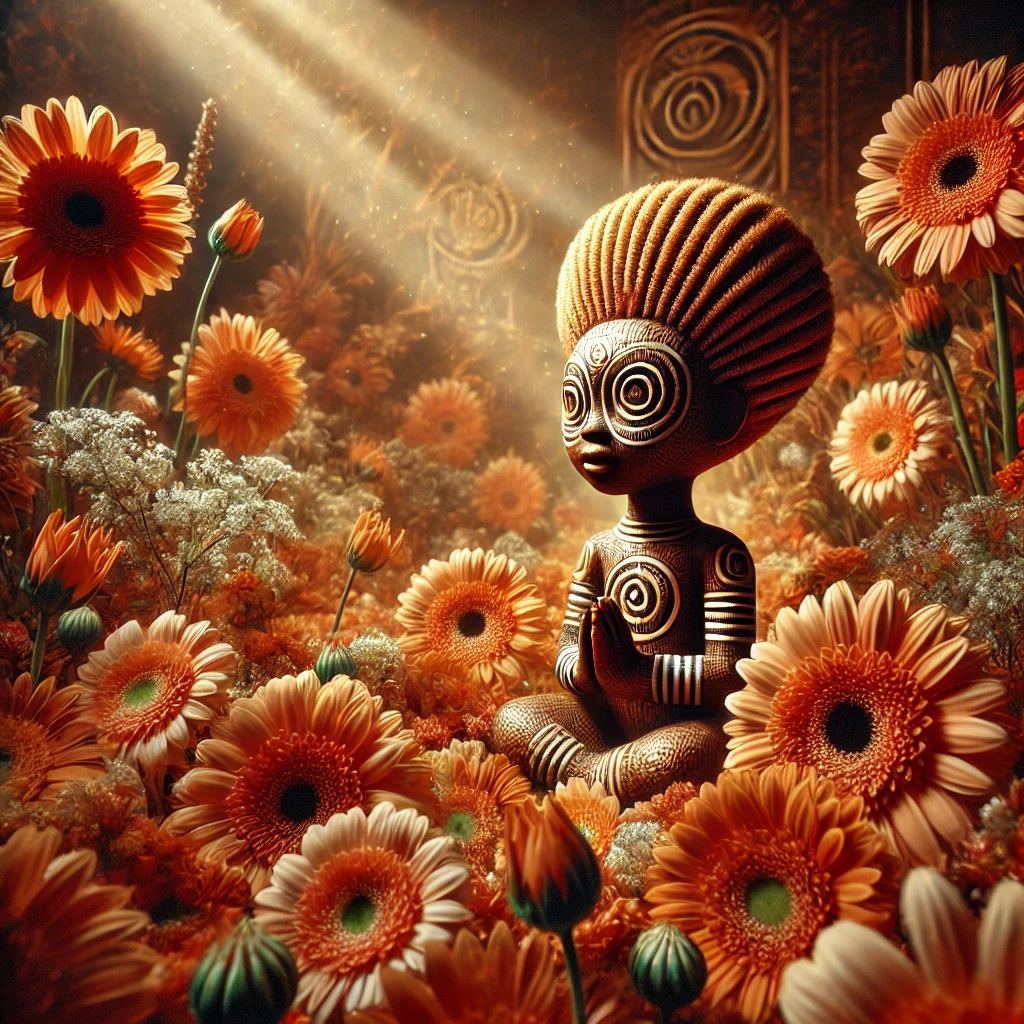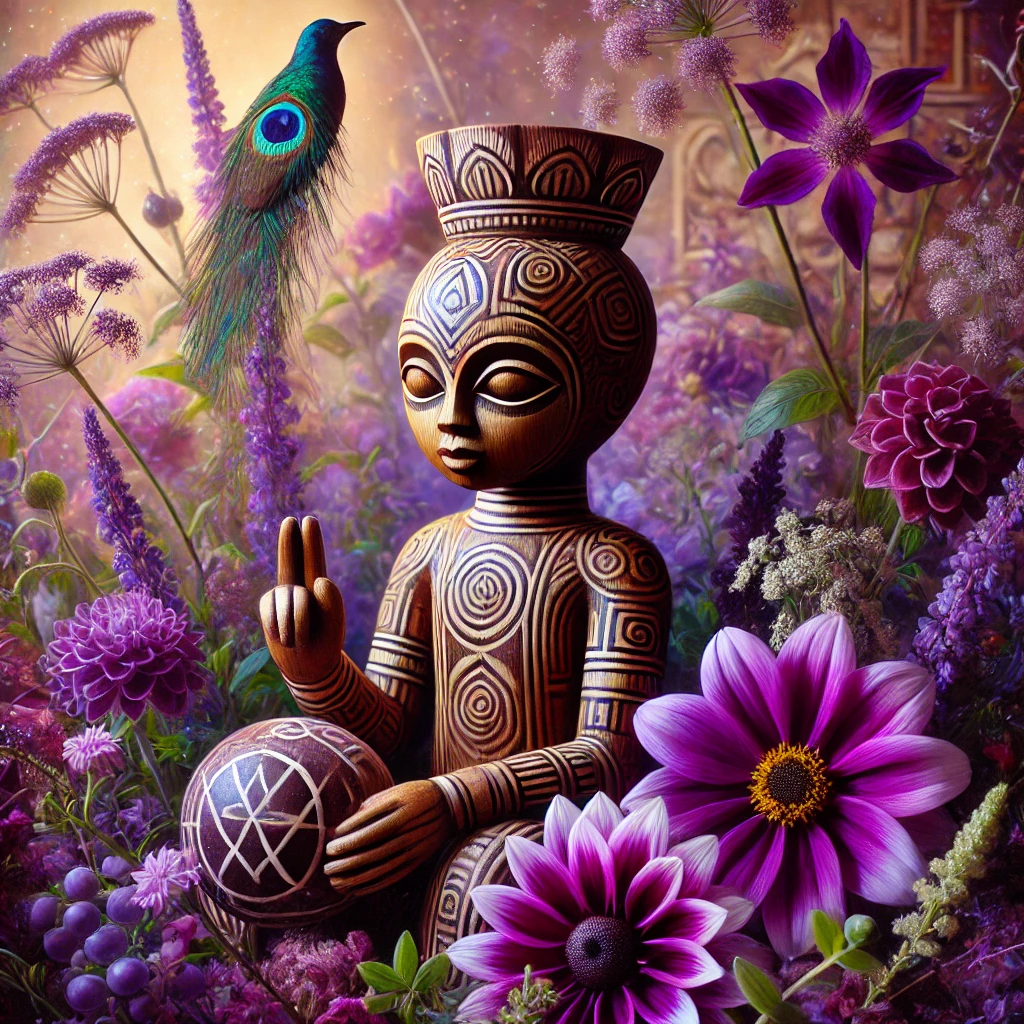The Significance of Flowers in Merhorse Bakru Winti Dolls
Merhorse Bakru Winti Dolls and Flowers
The Merhorse Bakru Winti dolls hold a profound place in Afro-Caribbean culture, intertwining spirituality and artistic expression. Originating from the blend of African traditions and Caribbean influences, these dolls symbolize a connection to ancestral spirits, embodying the rich heritage passed down through generations. The term “Merhorse” and “Bakru” signify different aspects of the cultural narrative; Merhorse often represents the essence of the individual, while Bakru encapsulates the spiritual energy believed to reside within these artifacts.
These dolls are extensively used in rituals and ceremonies, serving as conduits for communication with the divine. Created with meticulous care, each doll is infused with personal significance, representing the beliefs and hopes of the individual or community. The intricate designs and symbols integrated into the dolls reflect spiritual meanings and serve as markers of identity. Furthermore, the act of crafting these dolls is often a communal activity, strengthening bonds within the community and fostering a shared sense of purpose and belonging.

One essential element in the creation of Merhorse Bakru Winti dolls is the incorporation of flowers. Flowers, in this context, extend beyond mere decorative features. They are symbolic, laden with meanings tied to life, death, and rebirth. By integrating flowers into the dolls, artists draw upon their spiritual significance, enhancing the ritualistic aspects of the dolls. Each flower can convey diverse meanings and emotions, enriching the narrative conveyed by the doll. Thus, flowers serve as critical components that enhance the spiritual power of the Merhorse Bakru Winti dolls, inviting reflection on the themes of nature and the interconnectedness of life.
Understanding Winti Spirituality
Winti is an Afro-Surinamese spiritual belief system that emerged from the confluence of African traditions, indigenous practices, and European influences in Suriname. Having its roots in the religious practices of enslaved Africans, Winti embodies a unique synthesis of spiritual principles that reflect the diverse cultural backgrounds of its practitioners. This belief system revolves around the veneration of spirits, each associated with different aspects of nature and daily life. Winti signifies a deep connection to the natural world and emphasizes harmony between individuals and their environment.
The principles of Winti are based on a holistic understanding of existence, where every element in nature is imbued with spiritual significance. Practitioners believe that spirits inhabit natural entities, such as rivers, mountains, and plants, particularly flowers, which play a pivotal role in their spiritual framework. Through rituals, offerings, and prayers, Winti encourage followers to build a relationship with these spirits, ensuring balance and protection in their lives.
Flowers in Winti spirituality are seen as manifestations of divine energy. They serve not only as offerings but also as conduits for communication with the spiritual realm. Different species of flowers are associated with specific spirits and have unique meanings, prompting practitioners to choose them carefully for rituals and ceremonies. This intrinsic link between Winti beliefs and nature illustrates the importance of flora in establishing spiritual connections, which resonates in the context of Merhorse Bakru Winti dolls. These dolls are often adorned with flowers, symbolizing the spiritual essence and attributes they embody. Thus, understanding the significance of flowers within Winti spirituality enriches the appreciation of the cultural value of these dolls, highlighting a profound respect for nature within this tradition.
Symbolism of Flowers in Afro-Caribbean Culture

The symbolism of flowers in Afro-Caribbean culture holds significant importance, reflecting the region’s rich spiritual and emotional landscape. Flowers are often seen as embodiments of various emotions and natural elements, weaving together the intricate tapestry of beliefs that permeate Afro-Caribbean traditions. Different flowers symbolize diverse sentiments; for instance, hibiscus represents passion, while marigolds are associated with the transition between life and death. These representations enhance the understanding of life’s cyclical nature and the interconnectedness of all beings.
In rituals, flowers occupy a central role, serving not merely as decorative elements but as conduits for the spiritual energies that individuals seek to harness. Certain flowers are employed in offerings during ancestral worship or spirit invocation, illustrating their potency in bridging the physical and spiritual realms. For example, roses are often presented as a gesture of love and honor towards deities, while other flora may be designated for specific spirits, calling forth their guidance and blessings. This practice underscores a profound respect for nature, emphasizing its vital role in the cultural and spiritual lives of the community.
Furthermore, healing practices in Afro-Caribbean cultures often employ flowers, recognizing their potential to restore balance and harmony. Botanicals like lavender and chamomile are cherished for their calming properties, while others, such as ginger flowers, are utilized for their invigorating effects. This medicinal value associated with flowers illustrates a holistic understanding of health that integrates both physical and spiritual well-being. By incorporating flowers into healing rituals, practitioners acknowledge their intrinsic value beyond mere aesthetics, fostering a deeper appreciation of the natural world.
In essence, flowers in Afro-Caribbean culture serve as powerful symbols, embodying emotions, aspirations, and connections to the unseen. Their significance extends far beyond the visual, enriching rituals and beliefs, ultimately weaving together a complex narrative of identity, spirituality, and connection to nature.
The Role of Flowers in Merhorse Bakru Winti Dolls
Flowers play a pivotal role in the creation and presentation of Merhorse Bakru Winti dolls, integral to their spiritual and cultural significance. These dolls are not merely decorative artifacts; they are imbued with the essence of protection, prosperity, and spirituality. The inclusion of flowers in the design serves various purposes, each rooted in a rich cultural tradition that enhances the overall significance of the dolls.
Typically, various flowers are crafted from materials such as fabric or paper and are strategically placed on or around the dolls. Each type of flower carries its own symbolism. For example, the marigold is commonly associated with the triumph of life over death, making it a powerful symbol of protection. This meaning is particularly relevant as the dolls are often created to serve as guardians against malevolent forces, thereby ensuring safety for the individual or family.

Furthermore, flowers are believed to attract positive energies and blessings. Their vibrant colors and comforting fragrances facilitate a connection to the spiritual realm, and they are often used in rituals associated with prosperity. By integrating flowers into the dolls, creators emphasize the desire for abundance and fertility in various aspects of life. The presence of these floral elements within the Merhorse Bakru Winti dolls transforms them into powerful spiritual tools that encapsulate the creators’ hopes and intentions.
Moreover, the visual aesthetics created by the flowers contribute to the overall appeal of the dolls, making them not only meaningful objects but also attractive pieces of art. The synergy between the spiritual significance of flowers and their visual charm enhances the dolls’ ability to resonate with those who seek their guidance or protection. The role of flowers in Merhorse Bakru Winti dolls is, therefore, multifaceted and essential for the dolls’ cultural and spiritual relevance.
Different Types of Flowers Used in Dolls
The artistry of Merhorse Bakru Winti dolls is deeply rooted in cultural traditions, where specific flowers play a crucial role in enhancing the spiritual energy and overall symbolism of each doll. One prominent flower often utilized is the marigold. Known for its warmth and vibrant color, marigolds are believed to attract positive energy and ward off negative spirits, thus enriching the protective qualities of the doll. Traditionally, they are associated with themes of celebration and renewal, making them a favored choice in this context.
Another significant flower is the hibiscus, which is known for its striking beauty and is often linked to femininity and strength in various cultures. In the context of the Bakru Winti dolls, hibiscus symbolizes resilience and regeneration, serving as a reminder of the strength within the community. Legend holds that wearing hibiscus blossoms can influence personal and communal health, reinforcing the idea that the flower imbues the doll with these beneficial qualities.
Furthermore, lotus flowers are frequently integrated into the designs of Bakru Winti dolls, symbolizing purity and spiritual awakening. The lotus rises from muddy waters, blossoming into a stunning flower, much like the spiritual journey undertaken by individuals. This flower lends a layer of depth to the dolls, as it emphasizes transformation and enlightenment, themes central to the beliefs surrounding Merhorse Winti practices.
Lastly, the chrysanthemum is another flower traditionally used. Known for representing loyalty and honesty, the chrysanthemum contributes to the spiritual ambiance of the doll, embedding a sense of trust and community values. Each flower chosen for these dolls is not merely decorative; instead, they resonate with rich cultural heritage, enhancing the spiritual narrative of the Merhorse Bakru Winti dolls.
The Process of Incorporating Flowers into the Dolls
The incorporation of flowers into Merhorse Bakru Winti dolls is a meticulous and intentional process, reflecting both artistic choice and cultural significance. Artists begin this process by choosing specific flowers that resonate with the themes and spiritual meanings intended for each doll. The essence of flowers—ranging from their symbolism to their colors and textures—plays a critical role in conveying the desired message. For instance, flowers like marigolds might symbolize protection, while hibiscus can be associated with beauty and love.
Once the flowers have been selected, artisans meticulously prepare them for incorporation into the dolls. This can involve drying, painting, or crafting the flowers to enhance their durability and visual appeal. The technique employed often varies from artist to artist, with some utilizing intricate arrangements that highlight the natural beauty of the flowers. Others may opt for more abstract representations that align with the spiritual essence they wish to encapsulate within the doll.
Emotional and spiritual intent is paramount during this creative process. As each flower is added, the artist infuses the doll with specific powers or blessings, often informed by the beliefs surrounding the chosen flora. Thus, the act of incorporating flowers becomes a ceremonial experience in itself, intended to imbue the doll with protective charms or spiritual guidance. It is through these intentional choices and artistic methods that the dolls become not merely decorative pieces but vessels of cultural heritage and emotional expression.
In conclusion, the process of incorporating flowers into Merhorse Bakru Winti dolls is an essential aspect of their creation, influenced by artistic methods, aesthetic choices, and a deep-seated emotional intent. As such, each doll tells a story, celebrating the interplay between art, nature, and spirituality.
The Impact of Flowers on Spiritual Energy
Flowers have long been associated with various spiritual beliefs and practices around the world. In the context of Merhorse Bakru Winti dolls, these natural elements are not merely decorative; they are perceived as vital components that significantly enhance the spiritual energy surrounding these figures. Traditionally, flowers are thought to act as conduits to spiritual realms, fostering a deeper connection between the spiritual world and the physical domain.
In various African spiritual traditions, flowers are often used in rituals to invite positive energies and discourage negative influences. When placed alongside Merhorse Bakru Winti dolls, it is believed that these floral offerings amplify the dolls’ ability to attract benevolent spirits, ensuring a harmonious presence within the space they inhabit. The specific types of flowers chosen can hold distinct meanings, further intensifying their spiritual impact. For instance, certain blooms symbolize love, peace, or protection, thus serving specific purposes in the enhancement of the dolls’ energy.
The placement of flowers within the home or sanctuary, where Merhorse Bakru Winti dolls are displayed, can also influence the overall atmosphere of the environment. Fresh flowers, with their vibrant colors and natural fragrances, are believed to uplift the energy, creating a serene and inviting space. This effect is often sought after in spiritual practices, as a positive and energetic home contributes to the well-being of its inhabitants, both spiritually and emotionally.
Overall, flowers are considered essential in the realm of Merhorse Bakru Winti dolls, enriching their spiritual significance and transforming the energy of the spaces they adorn. By utilizing flowers as expressions of reverence and connection, practitioners aim to create an elevated spiritual atmosphere, conducive to peace and protection.
Caring for Flowers in Merhorse Bakru Winti Dolls
The flowers used in Merhorse Bakru Winti dolls play a fundamental role in both their aesthetic appeal and their spiritual significance. To ensure that these flowers retain their vibrancy and potency, several care practices should be considered. First and foremost, hydration is crucial. Fresh flowers should be kept in a moisture-rich environment. If possible, mist the flowers regularly with water to prevent wilting. Additionally, placing them in a cool, shaded area will help slow the drying process, preserving their beauty and energetic qualities.
In terms of preservation techniques, certain methods can be employed to extend the life of the flowers. For instance, using glycerin can help maintain their flexibility and color. To do this, prepare a solution of one part glycerin to two parts water. Submerge the flowers in this mixture and allow them to absorb it for several days. This technique not only preserves the flowers but also helps them maintain a more natural appearance over time. Furthermore, consider using silica gel for drying; this method is effective in retaining the flower’s original shape and color without sacrificing its spiritual attributes.
It is also imperative to assess the appropriateness of replacing the flowers. While many may wish to keep the same flowers for sentimental value, regular replacement ensures that the spiritual energy of the Merhorse Bakru Winti dolls remains potent. Flowers are considered conduits for energy, and as they age, their vitality diminishes. Therefore, it is advisable to periodically refresh the floral elements, allowing the dolls to resonate with new life and energies that align with their purpose in the spiritual realm.
Conclusion
Flowers have played an integral role in the cultural and spiritual tapestry of Afro-Caribbean practices, particularly within the context of Merhorse Bakru Winti dolls. These colorful floral adornments are not merely decorative but serve as vital components that embody deep spiritual meanings and connections to ancestral heritage. The significance of flowers extends beyond their aesthetic appeal; they are potent symbols of life, spirituality, and the continuity of cultural traditions.
In the realm of Winti—a spiritual belief system of the Maroon communities—flowers often represent various spirits and deities, connecting practitioners to the divine. The use of flowers within the framework of Merhorse Bakru dolls highlights their importance as rituals of preservation and a manifestation of reverence for nature and the pantheon of spirits. Each bloom imbues a layer of meaning, contributing to the vibrancy and depth of the practice, while also serving as a reminder of the interwoven relationship between humans and the natural world.
Moreover, the aesthetic significance of flowers enhances the visual and emotional impact of these dolls, fostering a sense of beauty and serenity. The act of incorporating flowers into the creation and decoration of Bakru Winti dolls fosters not only a sense of spiritual connection but also aids in the celebration of cultural identity. As generations continue to engage with these dolls, the legacy of flowers remains relevant, reminding practitioners and observers alike of the enduring power of tradition in contemporary spiritual practices.
Thus, the role of flowers in Merhorse Bakru Winti dolls is a testament to the richness of Afro-Caribbean spiritual practices, emphasizing both their historical significance and their vital role in the ongoing dialogue between heritage and modernity. Embracing the story that these blossoms tell ensures that their legacy lives on, treasured by future generations.
Suadiye su kaçağı tespiti Güngören’deki evimizdeki su kaçağını çok hızlı tespit ettiler. Gerçekten profesyonel bir hizmet. https://puskamsikham.fh.unila.ac.id/author/kacak/